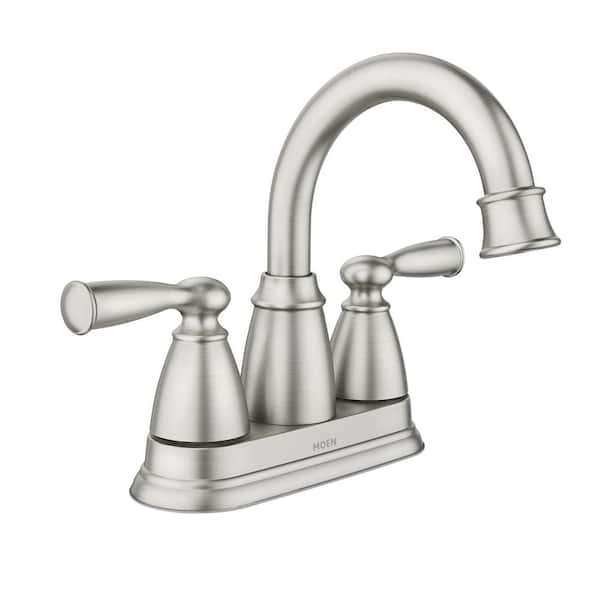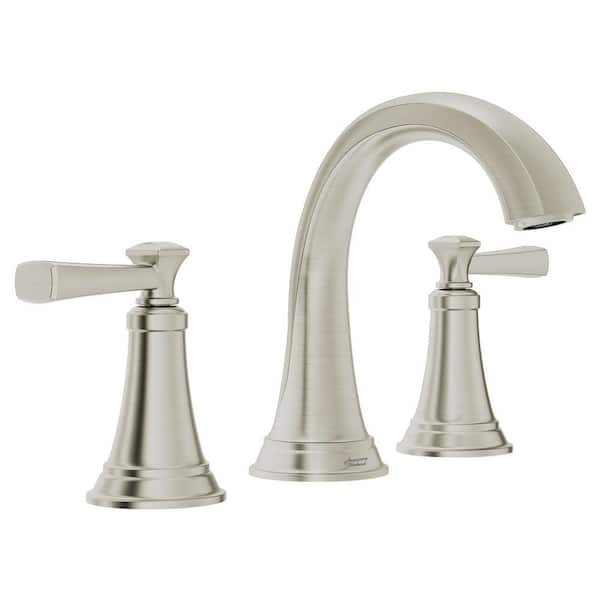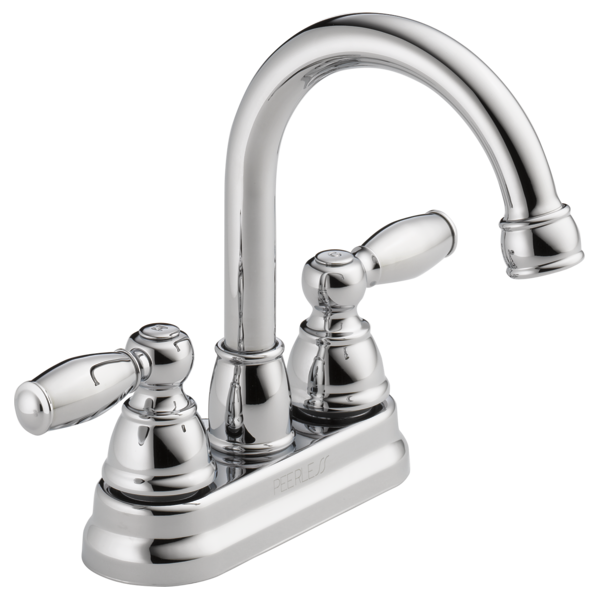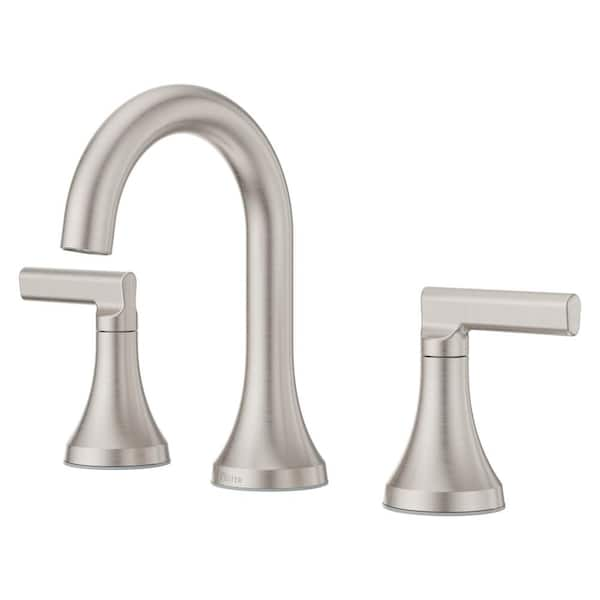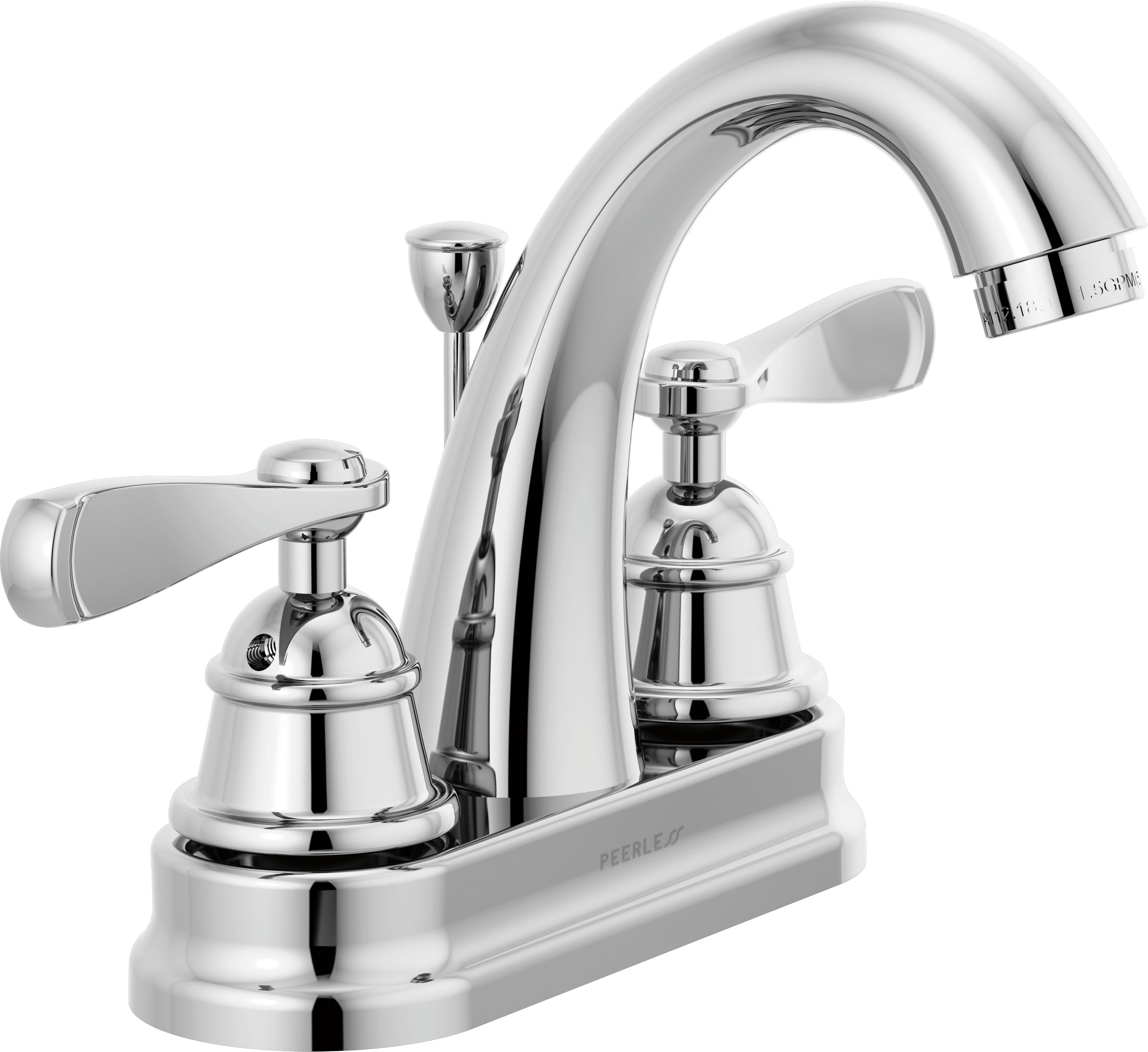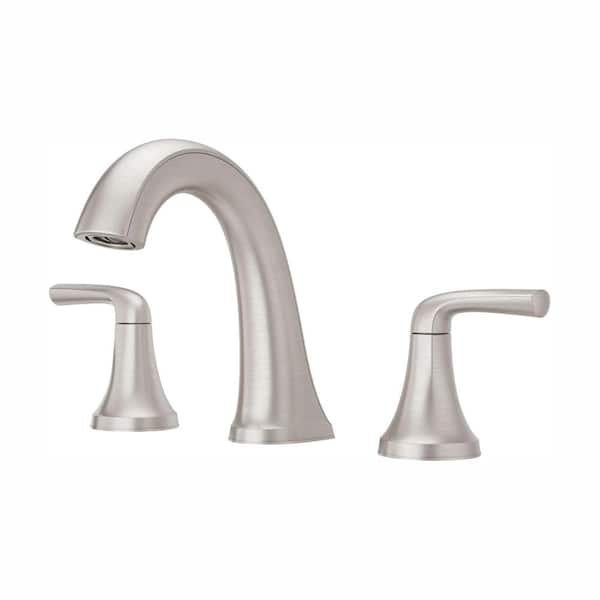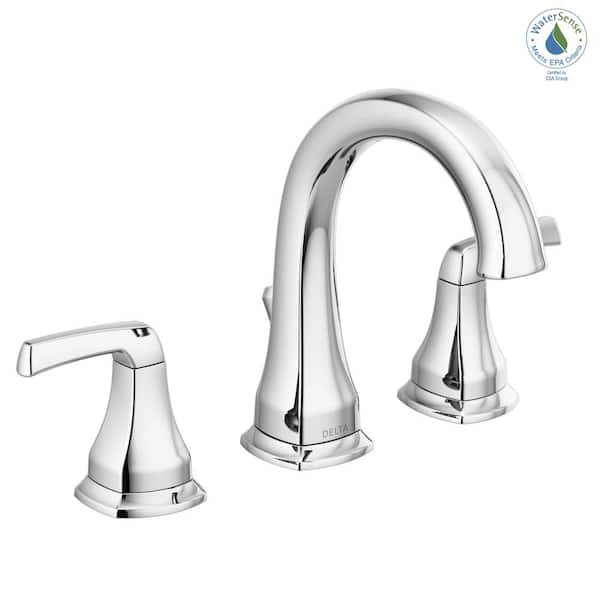Understanding the Appeal of Double Handle Bathroom Faucets
When I first started exploring faucet designs for my bathroom, I noticed that double handle faucets stood out. There’s something undeniably appealing about their balanced, symmetrical look. These faucets often catch attention for their classic and elegant style, but their charm goes beyond just aesthetics. Double handle bathroom faucets offer more than meets the eye, and their appeal lies in several practical benefits that make them a preferred choice for many homeowners.
- Classic Aesthetic and Timeless Design The first thing that drew me in was the timeless design. Double handle faucets have been around for decades, and their enduring popularity speaks volumes about their style. Whether you prefer a vintage-inspired bathroom or a more contemporary look, these faucets easily blend in. I found that they work exceptionally well in both traditional and modern bathrooms, adding a touch of elegance and symmetry that single-handle faucets sometimes lack.
- Precise Temperature Control What I love most about double handle faucets is the control they offer. With separate handles for hot and cold water, I can fine-tune the temperature to my exact preference. This level of precision is perfect for those who don’t like compromising between too hot or too cold. I found that it’s easier to get the right balance, especially in households with varying preferences.
- Reduced Wear and Tear Surprisingly, double handle faucets tend to experience less wear and tear compared to single handle models. With two separate controls, the mechanisms for hot and cold water are independent, meaning they don’t undergo as much strain from repeated use. Over time, I noticed that my double handle faucet was less prone to leaks or mechanical issues, making it a more durable option for long-term use.
- More Customization Options Double handle faucets also come in a wide range of styles and finishes, offering more customization options. I found this to be a huge advantage when trying to match the faucet to my bathroom’s overall aesthetic. From sleek chrome to brushed nickel, the choices are vast, and they allow for personal expression through bathroom fixtures. The variety also includes different handle shapes and finishes, making it easier to find the perfect match.
- Water Efficiency While it may not be the first thing that comes to mind, I found that double handle faucets can contribute to water efficiency. By controlling both hot and cold water separately, I avoid the tendency to leave the water running while waiting for the right temperature. This has helped me reduce water wastage, especially when trying to get that perfect mix during a morning routine.
- A Sense of Luxury Lastly, double handle faucets often provide a sense of luxury. The extra detail in the design, combined with their functionality, gives bathrooms a more upscale feel. I found that adding a double handle faucet instantly elevated the look of my bathroom without needing a complete renovation. It’s a small change that can make a big impact on the overall ambiance of the space.

Exploring Different Styles of Double Handle Bathroom Faucets
When I began exploring the various styles of double handle bathroom faucets, I was surprised by how diverse the options were. Double handle faucets aren’t limited to one specific look or finish. Whether you’re aiming for a sleek, modern aesthetic or a more traditional vibe, there’s a style to match. With so many available designs, it can be easy to find a faucet that perfectly complements your bathroom, adding both beauty and functionality to the space.
Traditional Cross Handles The first style that caught my eye was the classic cross-handle design. This type of faucet is reminiscent of old-fashioned bathrooms and has a distinct vintage charm. I love the way these handles feel in hand – sturdy and easy to grip. They also tend to come in finishes like polished chrome or brass, enhancing their timeless look. I found these particularly well-suited to traditional or farmhouse-style bathrooms.
Lever Handles for Modern Appeal If you’re looking for something a bit more contemporary, lever handles might be the way to go. These faucets typically have a sleek, streamlined appearance, making them perfect for modern or minimalist bathrooms. I appreciate how easy lever handles are to use, especially if you need to adjust the water flow or temperature quickly. They also come in various finishes like matte black, brushed nickel, and polished chrome, offering versatility in design.
Wall-Mounted Double Handle Faucets One style that instantly stands out is the wall-mounted double handle faucet. I found this option to be particularly chic and ideal for saving counter space. Wall-mounted faucets not only look sophisticated but also add a unique, custom feel to the bathroom. They’re great for bathrooms with vessel sinks or when trying to achieve a spa-like atmosphere. I personally love the way these faucets can create a focal point in the bathroom, making the sink area more visually interesting.
Widespread Faucets for a Luxurious Feel Widespread faucets, where the spout and handles are installed separately, offer a more luxurious and custom look. I was drawn to this style because it allows for more flexibility in positioning the handles, giving the sink area a unique layout. Widespread faucets often come in high-end finishes like oil-rubbed bronze or antique brass, adding an extra touch of sophistication. These faucets work well in larger bathrooms where you have more counter space to play with.
Bridge Faucets for a Vintage Vibe Bridge faucets are another style I couldn’t help but admire. With their exposed pipe design connecting the hot and cold handles, they evoke a sense of industrial or vintage charm. I found that bridge faucets can be an excellent choice for homeowners looking to add a bit of rustic elegance to their bathrooms. While they may not be as common as other styles, their unique look makes them a standout choice for anyone looking to make a bold statement.
Minimalist Design with Slim Handles Finally, for those who prefer a minimalist design, slim-handle double faucets are an excellent option. These faucets feature thin, unobtrusive handles that provide a sleek, modern look without overpowering the sink area. I found that these faucets are perfect for bathrooms where you want the design to be understated yet stylish. The slim handles also give the bathroom a more contemporary feel, making them a great choice for modern spaces.
Benefits of Installing a Double Handle Faucet in Your Bathroom
When I was deciding between a single and double handle faucet for my bathroom, I found that double handle faucets offer several distinct advantages. While the style alone is enough to catch anyone’s eye, the practical benefits that come with installing a double handle faucet are worth considering. From enhanced water control to aesthetic versatility, there are multiple reasons why a double handle faucet can be a smart choice for any bathroom.
Enhanced Temperature Control One of the standout benefits of a double handle faucet is the ability to precisely control water temperature. With separate handles for hot and cold, I can easily adjust the temperature to my exact liking. Unlike single-handle faucets, where finding the right balance can sometimes be tricky, the dual-handle design allows for more precise adjustments. This level of control is particularly useful when multiple people in the household have different temperature preferences.
Increased Durability Another major benefit I’ve noticed is that double handle faucets tend to be more durable. With two separate handles, the wear and tear on the faucet’s internal components is spread out more evenly. This reduces the likelihood of breakdowns or leaks over time, making double handle faucets a long-lasting option. I found that because each handle controls a specific function, they experience less strain than single-handle models that manage both water flow and temperature with one mechanism.
Water Efficiency Although it might not seem obvious at first, double handle faucets can contribute to water conservation. With more precise temperature control, I don’t waste as much water waiting for the right temperature. This is especially noticeable in the mornings, when I’m getting ready quickly and don’t want to waste time – or water – trying to find the perfect balance. Over time, this efficiency can lead to savings on both water usage and energy costs.
Aesthetic Versatility Double handle faucets come in a wide range of designs, making them a versatile choice for any bathroom style. Whether you’re going for a modern, rustic, or vintage look, there’s a double handle faucet to match. I love how customizable they can be, with various finishes, handle shapes, and spout designs. This variety allows you to choose a faucet that complements the overall theme of your bathroom, making it both functional and stylish.
Easier Repairs and Maintenance What’s great about double handle faucets is that they are often easier to repair and maintain. If something goes wrong with the hot or cold handle, I can address that specific issue without affecting the other. This independent control system makes it simpler to troubleshoot and fix any problems that arise, as the two handles function separately. I’ve found this especially convenient when doing minor DIY repairs, as it reduces the complexity of the task.
Improved Hygiene Lastly, I’ve noticed that double handle faucets offer improved hygiene. Since you only need to touch the cold water handle for a quick rinse, you’re less likely to spread germs across the bathroom. After washing my hands, I can turn off the cold water handle without having to re-contaminate the hot water handle, reducing the spread of bacteria. This makes double handle faucets a great option for households with high hygiene standards.
How to Choose the Right Materials for a Double Handle Faucet
When I set out to choose the perfect double handle faucet for my bathroom, I quickly realized that selecting the right materials was just as important as picking the design. The material of your faucet determines not only how it looks but also how it performs over time. From the durability of the faucet to how well it resists tarnishing and corrosion, the material you choose plays a significant role in its longevity. I wanted a faucet that would stand the test of time, look beautiful, and be easy to maintain, so I took the time to research the best materials available.
Brass: The Long-Lasting Choice One of the first materials I considered was brass, and it became clear that this is one of the most popular choices for good reason. Solid brass faucets are known for their durability and resistance to corrosion. I found that brass faucets are particularly well-suited to humid environments like bathrooms, where moisture is constant. They’re often plated with finishes like chrome or nickel, giving you the option to match your faucet with your bathroom’s style while benefiting from the robustness of brass underneath. The added weight of a solid brass faucet also gives it a premium feel, which I appreciated.
Stainless Steel: Sleek and Sturdy Stainless steel is another excellent option for those looking for a strong, corrosion-resistant material. What I love about stainless steel faucets is their sleek, modern appearance. They often come with a polished or brushed finish, both of which complement a contemporary bathroom style. Stainless steel is also resistant to fingerprints and water spots, which I found to be a huge advantage when trying to keep my bathroom looking spotless. Plus, stainless steel is more affordable than brass, making it a great budget-friendly option that doesn’t compromise on quality.
Zinc Alloy: The Budget-Friendly Option While exploring different materials, I also came across zinc alloy faucets. These are often used in more affordable faucets, and they offer a decent level of durability at a lower price point. Zinc alloy faucets are often plated with chrome or nickel to enhance their appearance and protect against corrosion. While not as durable as brass or stainless steel, I found that zinc faucets can still be a good choice if you’re on a tight budget or if you need a quick, cost-effective upgrade for a guest bathroom or powder room.
Bronze: A Unique, Warm Finish If you’re looking for something with a bit more character, bronze faucets might be the way to go. Oil-rubbed bronze or brushed bronze finishes offer a rich, warm tone that can add a lot of personality to your bathroom. I was immediately drawn to the way bronze faucets stand out, giving the bathroom a more rustic or vintage vibe. While bronze faucets tend to be on the pricier side, I found them to be well worth the investment if you’re looking for a statement piece. However, it’s important to note that bronze faucets may require a bit more maintenance to keep their finish looking pristine.
Chrome: The Easy-to-Clean Classic Chrome faucets are a classic for a reason. They are one of the most popular finishes, thanks to their shiny, reflective surface and their ability to fit into almost any bathroom design. What I liked most about chrome is how easy it is to clean and maintain. A quick wipe down is usually all that’s needed to keep it looking like new, which is perfect for busy households. While chrome can be prone to showing water spots and fingerprints, regular cleaning can prevent it from looking dull. Plus, chrome is one of the more affordable options, making it a great choice for those seeking a stylish faucet without breaking the bank.
Nickel: The Elegant, Versatile Option Lastly, I looked into nickel faucets, which are known for their sophisticated appearance. Brushed nickel, in particular, has a soft, matte finish that adds elegance to the bathroom without being too flashy. I found that nickel faucets are a great option if you want something versatile that works well with a variety of bathroom styles. However, nickel does tend to show smudges and water spots more than other finishes, so it requires regular maintenance to keep it looking its best. Still, if you’re willing to put in a little extra care, a nickel faucet can add a subtle, refined touch to your bathroom.
Installation Tips for Double Handle Bathroom Faucets
Installing a double handle bathroom faucet can seem like a daunting task, but with the right preparation and tools, I found that it’s actually quite manageable. Whether you’re replacing an old faucet or installing a brand-new one, following a few key steps can make the process much smoother. After tackling this project myself, I realized that careful planning and attention to detail are crucial for a successful installation. Here’s how I approached installing my double handle faucet and the tips I picked up along the way.
Start by Turning Off the Water Supply The very first thing I did was shut off the water supply to the sink. This is an essential step that can save you from a lot of mess later on. I located the shutoff valves under the sink and turned them off before disconnecting the old faucet. I also made sure to turn on the faucet to release any remaining water in the lines, which helped prevent any unwanted spills while I worked. Having a towel or bucket nearby is always a good idea, just in case there’s any leftover water.
Remove the Old Faucet and Clean the Surface After the water was off, I removed the old faucet. This can involve loosening the mounting nuts under the sink, which may require a basin wrench depending on the faucet’s location. Once the old faucet was out, I took the time to thoroughly clean the surface around the sinkholes. I found that this step is important because leftover grime or old plumber’s putty can interfere with the new faucet’s installation. I used a sponge and some mild cleaner to get the area spotless.
Check the Fit of the New Faucet Before diving into the full installation, I checked the fit of my new faucet to make sure everything lined up properly. Since double handle faucets typically require three holes – one for the spout and two for the handles – I made sure that the sink was compatible with the faucet I had chosen. If you’re installing a widespread faucet, it’s important to measure the distance between the holes to ensure a proper fit. Taking this extra step saved me time and frustration down the line.
Apply Plumber’s Putty or Gaskets To create a watertight seal, I used plumber’s putty around the base of the faucet. Some faucets come with rubber or silicone gaskets, which can be an alternative to putty. I found that applying a thin layer of putty around the base of the faucet spout and handles helped prevent water from seeping underneath. It’s important not to skip this step, as it can lead to leaks later on. Once the faucet was in place, I tightened the mounting nuts securely without overtightening, as that could damage the sink.
Connect the Water Supply Lines After securing the faucet, it was time to reconnect the water supply lines. I used flexible supply lines, which made this part of the installation much easier. I connected the lines to the hot and cold water handles, making sure to tighten them snugly without overdoing it. One tip I found helpful was to hand-tighten the connections first and then give them an additional quarter-turn with a wrench. This ensures a secure fit without risking damage to the connections.
Test for Leaks and Make Adjustments Finally, after everything was connected, I turned the water supply back on and tested the faucet for leaks. I made sure to check both the handles and the connections underneath the sink. If any leaks appeared, I tightened the connections slightly until the leaks stopped. I also tested the hot and cold water to ensure the handles were functioning correctly. Once everything was running smoothly, I wiped down the faucet and admired my work.
Maintenance and Cleaning of Double Handle Faucets for Longevity
One of the things I’ve learned from owning a double handle faucet is that regular maintenance and cleaning can go a long way in ensuring its longevity. A well-maintained faucet not only looks better but also functions more efficiently over time. With just a little effort, I’ve been able to keep my faucet in great condition, saving myself the hassle of repairs or replacements down the line. Here’s how I’ve approached maintaining and cleaning my double handle faucet to keep it working like new.
Regularly Wipe Down the Faucet The easiest and most effective way I’ve found to keep my faucet clean is to wipe it down regularly. After each use, I take a moment to wipe away any water spots, soap scum, or toothpaste that may have splashed onto the faucet. This prevents buildup over time and keeps the finish looking shiny. I’ve found that a soft cloth works best, as abrasive materials can scratch the finish. For tougher spots, a mild dish soap solution usually does the trick.
Avoid Harsh Cleaning Products While it’s tempting to use strong cleaning products to get rid of grime, I’ve learned that this can actually damage the faucet’s finish. Harsh chemicals can wear away at protective coatings, leading to dullness or even corrosion. Instead, I stick to mild cleaners like diluted vinegar or a gentle bathroom cleaner. For polished finishes like chrome, I avoid anything acidic that could tarnish the surface. This simple change in my cleaning routine has helped preserve the faucet’s appearance.
Check for Leaks and Drips Periodically checking the faucet for leaks or drips is another key part of maintenance. Even a small drip can lead to wasted water and higher utility bills. I make it a habit to inspect the area around the faucet handles and the base for any signs of moisture. If I notice any leaks, I address them right away by tightening the connections or replacing worn-out washers. Keeping an eye on these small issues helps prevent larger problems from developing over time.
Clean the Aerator One area that often gets overlooked is the aerator, which is the small screen at the end of the faucet spout. Over time, mineral deposits can build up and reduce the water flow. I’ve found that removing and cleaning the aerator every few months helps maintain strong water pressure. It’s a simple task – I unscrew the aerator, soak it in vinegar to dissolve any mineral deposits, and then rinse it thoroughly before reinstalling it. This has made a noticeable difference in the faucet’s performance.
Lubricate the Handles If I ever notice that the faucet handles are getting stiff or difficult to turn, I take the time to lubricate the internal components. This is especially important in older faucets where wear and tear can make the handles less smooth. I’ve found that using a silicone-based lubricant works best for faucets, as it won’t damage the internal parts. Applying a small amount to the handle stems helps keep everything moving freely and prevents the handles from becoming difficult to use.
Inspect for Mineral Buildup If you live in an area with hard water, mineral buildup can be a significant issue. I regularly check the base of my faucet and around the handles for signs of calcium deposits. If I notice any white or chalky residue, I clean it with a solution of vinegar and water. Letting the vinegar sit on the deposits for a few minutes before scrubbing them away has proven to be an effective method for keeping the faucet free of buildup. This not only improves the faucet’s appearance but also prevents clogs and damage over time.
Common Issues and Troubleshooting for Double Handle Faucets
After using a double handle bathroom faucet for some time, I’ve learned that while these faucets are generally reliable, they’re not immune to the occasional issue. Over time, faucets can develop problems like leaks, drips, or reduced water flow. Rather than calling a plumber for every minor issue, I’ve found that many common problems can be easily fixed with a little troubleshooting and some basic tools. Here’s a look at some of the most frequent issues I’ve encountered with double handle faucets and how I’ve been able to resolve them.
Leaking Faucet Handles One of the most common issues I’ve faced is leaking faucet handles. This can happen when the internal washers or O-rings wear out over time. The first step I took was to turn off the water supply and remove the faucet handle using a screwdriver. Once I had access to the internal components, I checked the washers and O-rings for signs of wear. In most cases, replacing these parts solved the issue. I found that keeping a few spare washers on hand made the process quick and easy, saving me from the hassle of a constant drip.
Low Water Pressure Another issue I’ve encountered is low water pressure from the faucet. This can be caused by a clogged aerator or mineral buildup inside the faucet. To troubleshoot this, I started by unscrewing the aerator and soaking it in vinegar to dissolve any mineral deposits. After rinsing it thoroughly, I reinstalled it, and the water flow improved significantly. If cleaning the aerator didn’t solve the problem, I checked the water supply lines to ensure they weren’t kinked or clogged. In some cases, flushing the lines with water helped restore proper pressure.
Stiff or Hard-to-Turn Handles Over time, the handles on a double handle faucet can become stiff or difficult to turn. I found that this is usually caused by a buildup of mineral deposits or worn-out internal parts. To fix this, I turned off the water supply, removed the handles, and inspected the internal cartridges or valve stems. Cleaning these components with vinegar or replacing them if they were damaged helped restore the smooth operation of the handles. Applying a silicone-based lubricant also helped keep the handles moving freely.
Water Leaking from the Base of the Faucet If water is leaking from the base of the faucet, it’s often due to a worn-out seal or gasket. I noticed this issue when water would pool around the base of the faucet after use. To fix it, I removed the faucet and checked the seals and gaskets for signs of damage or wear. Replacing these parts with new ones solved the problem and prevented further leaks. I also made sure to apply plumber’s putty around the base of the faucet during reinstallation to create a watertight seal.
Dripping Faucet Spout A dripping faucet spout is not only annoying but can also waste a lot of water over time. I learned that this issue is usually caused by worn-out cartridges or valve seats inside the faucet. To fix this, I turned off the water supply and disassembled the faucet to access the cartridges. After removing the old cartridges, I installed new ones, which stopped the drip immediately. I found that keeping the cartridges clean and free from mineral buildup also helped extend their lifespan and prevent future drips.
Inconsistent Water Temperature Occasionally, I’ve noticed that the water temperature from my double handle faucet fluctuates, even when the hot and cold handles are set in the same position. This can be caused by a faulty mixing valve or an issue with the water heater. To troubleshoot, I first checked the water heater to ensure it was functioning properly. If the problem persisted, I turned off the water supply and inspected the mixing valve inside the faucet. Replacing the valve solved the issue and ensured a consistent water temperature.
Pfister Vedra 8 in. Widespread Double Handle Bathroom Faucet in
Bathroom Faucet 2 Handle 4 Inch Centerset Bathroom Sink Faucet, Lead-Free Basin Mixer Tap with Lift Rod Drain Stopper
Peerless Centerset Two Handle Bathroom Faucet in Chrome
Two Handle Widespread Bathroom Faucet
Pfister Ladera 8 in. Widespread 2-Handle Bathroom Faucet in Spot
Tallinn 8″ widespread two-handle bathroom faucet
PARLOS Double-Handle Lavatory Faucet with Metal Drain Assembly and Supply Hose Lead-Free cUPC Bathroom Faucet Mixer Two-Handle Lavatory Vanity Utility
Delta Portwood 8 in. Widespread 2-Handle Bathroom Faucet in Chrome
Related Posts:
- Delta Cassidy Widespread Bathroom Faucet
- Bandini Bathroom Faucets
- Vigo Brushed Nickel 1 Handle Single Hole Watersense Bathroom Faucet
- Most Popular Bathroom Faucets
- American Made Bathroom Faucets
- Counter Mount Bathroom Faucet
- Delta Arabella Bathroom Faucet
- Moen Banbury Single Handle Bathroom Faucet
- Kohler 4 Inch Bathroom Faucet
- Andre Collection Bathroom Faucets

